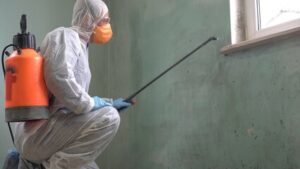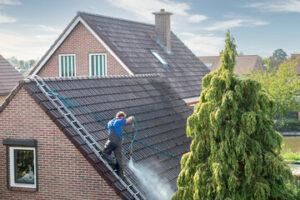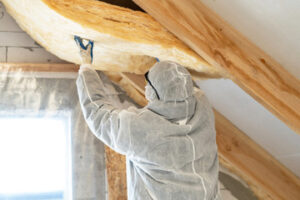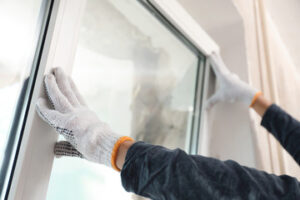Cabinets are one of the biggest focal points in any kitchen. If they start to look dingy or out of date, it can quickly make the rest of your room feel worn down as well.
Thankfully, there are many simple ways to give your cabinets a makeover without having to gut them and start from scratch. Here are 10 stunning San Jose Cabinet Refinishing ideas to inspire you:
1. Paint Cabinets

Give your cabinets a new coat of paint for a fresh, updated look. Aim for a high-quality oil or acrylic latex primer; stain-blockers also work well if your cabinets are heavily stained. Use a brush to reach tight spots and edges, and a roller on the flat surfaces.
Once the primer dries, you can start painting. Use a low-VOC or alkyd paint (such as Advance) that dries hard and doesn’t yellow over time.
Before you begin painting, cover the floor and countertops with rosin paper and tape plastic sheeting to protect the rest of the house from dust and paint drips. If your cabinet boxes have a glossy finish, lightly sand them and wipe away any access dust with a tack cloth. This simple preparation produces a smooth finish that will last for years to come.
2. Replace Cabinet Doors
The doors on cabinetry take the brunt of spills, stains and general wear and tear, so they’re usually the first things to show their age. Rather than repainting your existing doors, consider replacing them with new ones to completely transform the look of your kitchen.
Add a buffalo check pattern to a recessed-panel cabinet door using this simple technique. Using a pencil and ruler, mark a grid of 2-inch squares on the inset panel surface. Tape around every other square with painters tape and paint them black; then paint the exposed squares gray.
Add cottage charm to a cabinet door with wooden appliques, available at most home improvement centers and craft stores. For a more dramatic update, use a glaze color that matches your cabinetry to create shading on the inset panel. Install crown molding for an elegant finishing touch.
3. Install Crown Molding
Crown molding is a beautiful way to add detail and make cabinets feel like part of the house’s architecture. It can also be used to continue a motif across other surfaces, such as bookshelves and mantels.
A coping saw makes it easy to assemble crown molding in inside corners. A coping cut mates the end of a piece of trim to a profiled backer, eliminating the need for miters.
If you’re staining your cabinet doors, be sure to set up fans for proper ventilation since many stains can emit harmful fumes. Thoroughly clean your doors using a degreaser and scrub brush before beginning the painting or staining process.
When the doors are dry, it’s a great time to finish the cabinet boxes. This will save you time and ensure that the door finishes match the box.
4. Add Roll-Out Shelves
If your cabinets are cluttered with items, install roll-out shelves in base cabinets to maximize storage space and make it easier to access frequently used kitchen tools. This DIY project is relatively easy for a homeowner to tackle and can add value to your home.
Paint or stain your cabinet hardware to refresh the look. Brass is the perfect finish for darker cabinet colors, while brushed nickel and satin nickel complement white or gray-toned cabinets and work well in transitional and contemporary kitchens.
Instead of replacing cabinet doors, try adding a pretty patterned insert to the center panel with this DIY cabinet update idea. Cut a piece of adhesive wallpaper to fit the recessed panel, then glue it on using wood strips that have been painted black. Add tin trim to the frame for an extra-special touch.
5. Remove Cabinet Doors
If your cabinetry is in great shape but you’re tired of the doors, remove them and convert to open shelving. This is a quick and inexpensive kitchen cabinet makeover, especially when you choose to leave the cabinet stiles in place for support.
Consider a dark stain for the new look. Black, navy blue and jeweled plum hues have a high-end allure that’s often desired by modern homeowners.
If you prefer a lighter color, opt for a coffee tone or bronze shade. Yellows and creams are soft colors that border on neutral yet contribute a warm, inviting feel to the kitchen.
6. Add Pull-Out Drawers
Adding a pull-out shelf is an easy DIY cabinet project that will instantly make your kitchen more efficient. Easily store pots and pans in this one-of-a-kind storage solution.
Whether you’re looking for a bold look or simply want more kitchen storage, this unique design is an attractive option that’s sure to catch your guests’ eyes. To create a custom pull-out shelf, repurpose a 1×3 pine frame from your cabinets and assemble it with sliding rails. To keep the rails secure, install a cleat at the back of each shelf.
Empty space above upper cabinets can feel empty and unfinished. Filling the empty wall with a vertical fluted molding adds texture and visual interest while keeping the design modern. Choose from a variety of fluted molds or explore more unique options like reeded, leaded, or tinted glass.
7. Extend Cabinets to the Ceiling
If a full cabinet remodel isn’t in your budget, spruce up your kitchen with decorative accents that add flair and sophistication. Even minor changes like a fresh coat of paint or crown molding can make a huge difference!
Consider applying a bold high gloss backsplash for a modern look. The slick finish helps the light reflect off your cabinets for a clean, bright space.
Swap out solid cabinet doors for glass-paneled versions to create a more open, airy look. Or, remove cabinet doors entirely for a trendier option that allows you to display decorative dishware or frequently used cookware.
Extending cabinets to the ceiling opens up more storage space. Adding roll-out shelves also improves functionality by making it easier to access hard-to-reach items in deep cabinets. Line your cabinet interiors with new paper or dividers to make them feel completely new.
8. Line Cabinet Interiors
Cabinets play a critical role in the kitchen. They store everything from delicate glassware to heavy pots and pans, so they need to be able to withstand daily wear and tear. Over time, the constant impact of opening and closing cabinets can degrade surfaces, causing warping or stains. Additionally, food spills and crumbs can create an unappetizing buildup and attract insects and rodents.
The best way to protect your cabinet interiors is by lining them. Start by emptying out your cabinets and removing all non-perishable bottles, cans, and boxes of food. Then, wipe down all cabinet surfaces.
To line cabinet shelves, purchase a sheet of copper metal and cut narrow wood trim pieces to fit around it. Then, attach the copper to the cabinet’s raised panel. Alternatively, you can use a hammer to nail a printed honeycomb pattern into the copper sheet.
9. Add Glass Panels
If you want to break up an all-wood look, add visual interest with glass cabinet doors. Choose a color that complements other kitchen finishes to add cohesive style.
To install a simple, DIY glass panel, nail layers of plywood or MDF together to make guides for the router’s pattern bit. Cut the guide to fit inside the door panel, then apply a wood glue and press in place. Paint or stain as desired.
Use contact paper or removable wallpaper to line drawer and cabinet interiors for a fresh, modern look that’s renter-friendly and easy to clean. Thistlewood Farms used a sample pot of olive green paint to turn plain white cabinets into striped kitchen cabinets in this rental apartment. The new look separated the kitchen from builder-grade basic and instantly added flair to the room. This update is also a great way to organize Tupperware, cookbooks and other kitchen necessities.
10. Add Hardware
Adding knobs and handles is a great way to upgrade the look of your cabinets. Knobs and pulls come in a variety of shapes, materials, and finishes to suit any style. To install new hardware, you’ll first need to remove the cabinet doors and use wood putty to fill any old holes. When drilling the new holes, start with a smaller bit to avoid splintering the wood.
Another option is to switch to a handleless door for a sleek glass look. This style has been trending in modern kitchens, and it can create a clean, minimalist aesthetic that will enhance your space’s brightness. Finally, if you want to brighten up your cabinetry even further, consider adding lighting underneath the cabinets. This will make it easier to find and reach your favorite cooking and dining items. This is also a simple DIY project you can do yourself!




